Updated: March 10th, 2023
This article contains affiliate links. Read the full disclosure here.
Let’s get the numbers out of
the way first!
A healthy male golden retriever weighs 65-80 lbs, but this mature weight is only achieved when at two years of age.
The same goes for the female goldens, which will weigh anywhere between 55 and 90 lbs.
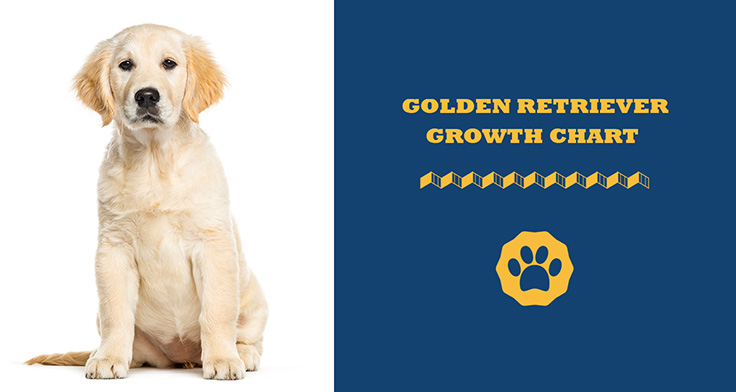
By one year, both genders will have reached their peak height: 23-24 inches for males and 21.5 – 22.5 inches for females.
Monitoring your golden retriever puppy’s health in the formative years and ensuring that they hit all of their growth milestones is one of the best ways to ensure their long-term health.
That’s exactly what a golden retriever growth chart is for!
Malnutrition and stunted growth or overfeeding and growing too quickly can both have significant long-term impacts on the health of your dog. But how do you know whether your puppy is on track?
While each golden retriever pup is unique and individual, they go through similar growth phases and should be hitting similar weight targets.
Below, you will find a comprehensive weight chart for both male and female golden retrievers, telling you exactly what kind of weight range they should be in at each stage.
Meanwhile, we will start by going through the five main stages of puppy growth and listing the key developmental milestones they should be hitting in each period.
Later on, we will discuss a little bit more about why it is important to ensure your golden retriever is neither too small nor too big for their age, then finish off with tips for healthy growth.
Puppy Growth Stages
All puppies go through similar growth phases in the first year or so of their lives.
Each stage has different developmental milestones and behaviors to look out for, and the puppy will need different types of care.
Stage One: Neonatal
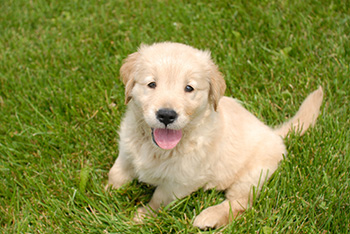
This period generally lasts from the birth of your puppy until they are about three weeks old.
During this period, they are largely helpless and should be kept with their mother, who will be able to feed them and keep them clean and warm.
At this stage, you will see their eyes and ears beginning to open, their first baby teeth coming through, and they will slowly start crawling, and then eventually walking unsteadily.
The size of puppies will vary significantly during this period, but they tend to be small and weigh less than five pounds.
Keep an eye on any dogs in the litter that are smaller than their siblings–the runts of the litter, if you will.
These runts often struggle in the earlier stages of life, as they cannot compete for the food and care they need from their mother.
This does mean that unless they are cared for by hand, they often die.
Life is especially hard if the runt is from a large litter. golden retriever litters can be anywhere from four to twelve pups, with eight being the average.
The mother might also reject the runt instinctively as part of the process of natural selection.
Key Development Milestones:
- Eyes and ears open
- First baby teeth come through
- Learning to crawl and walk awkwardly
-
Nylabone Teething Pacifier Puppy Chew Toy – BEST PACIFIER
-
Nylabone Puppy Twin Pack Petite Ring/Bone Combo Puppy Chew Toy – BEST CHEW TOY
-
Outward Hound Puppy Smart Dog Toy – BEST TOY
-
Pet Parents Washable Pawtect Dog Pee Pads – BEST PEE PAD
-
Vet’s Best Dental Finger Dog Toothbrush – BEST TOOTHBRUSH FOR PUPPY
Stage Two: Socialization
Lasting from about three to twelve weeks old, this stage is when puppies start to take in the world around them, so this is a vital period for their growth.
While puppies should continue to stay with their mother throughout this period, they will also need to start eating some solid foods as their mother’s milk dries up.
It is important to socialize puppies beyond their mother at this age; socialization should be with people and with other animals so they find it easier to get along with others when they are older.
This is also a good age to start taking them on car rides and introducing them to regular household menaces, such as the vacuum cleaner.
According to Dr. Barlow of Pet MD:
“A well-socialized pup should be outgoing and uninhibited while meeting new people, animals and being introduced to new places and will likely be very active and exploratory.”
At this age, they will be playful and run around, and they will learn important habits, such as inhibited biting, which is biting to play rather than hurt.
They also tend to start using their vocal cords more at this stage, so expect a bit of barking and growling.
It is also at the start of this period that your puppy will begin to learn to control their bladder and bowel movements, and by following the example of their mother, they are likely to leave the sleeping area to relieve themselves.
As soon as they start to demonstrate this behavior, house training can begin.
It is also during this period, from around eight weeks old, that golden retriever puppies can start to experience fear.
For this reason, it is very important to protect the pups from fearful situations, as bad experiences at this stage can have a lasting influence on their behavior.
Don’t be worried if your pup seems like a scaredy-cat at this age; it is just a phase that will pass.
Don’t forget to take your pooch for their first vaccinations around the six- to eight-week mark.
Key Development Milestones:
- Eating solid food
- Curious behavior
- Play begins
- Barking and growling
- Gaining control over bladder and bowel movements
- First vaccinations
-
Purina Pro Plan Puppy Large Breed Chicken & Rice Formula – BEST OVERALL
-
Purina ONE SmartBlend Large Breed Puppy Formula Dry Dog Food – RUNNER UP
-
Iams ProActive Health Smart Puppy Original Dry Dog Food – BEST BUDGET
-
Instinct by Nature’s Variety Raw Boost Large Breed Puppy Grain – MOST POPULAR
-
Blue Buffalo Wilderness Large Breed Puppy Chicken Recipe Grain-Free Dry Dog Food – PREMIUM CHOICE
Stage Three: Juvenile
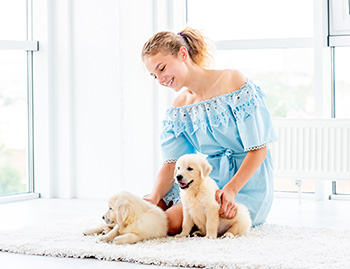
During this period, which lasts from three to six months old, your puppy’s rapid growth will start to slow down a bit, as they are now pretty much fully developed and are just smaller versions of the adult dogs that they will be.
At this point, they will lose their baby teeth, and their adult teeth will start coming through.
It is also at this stage that puppies can be removed from their mother and taken to their family home, though this should be done with care.
This is also a vital period for training as well, during which the puppy will develop habits for life.
It is important to have clear and consistent rules and to train the dog through positive reinforcement at this time, and never rely on punishment.
Again, during this period, the dog is still learning about fear. Any fearful experience, such as punishment, can have a long-term, negative impact on their behavior.
Unless you are planning on breeding your golden Retriever, this is also the age to have them spayed or neutered, just before they reach sexual maturity. According to Dr. Murray of PetMD:
“…spaying greatly reduces the chance of mammary cancer and eliminates the possibility of uterine or ovarian cancer, while neutering will decrease the possibility of prostate disease and eliminates testicular cancer in your golden retriever. Spaying and neutering can also help to lessen the development of certain behavioral issues in your puppy as he or she continues to grow.”
Key Development Milestones:
- Adult teeth start to come through
- Can be removed from their mother
- Serious training can begin
- Spaying and neutering should take place
Stage Four: Sexual Maturity
Starting at around six months old and continuing until as late as 16s, golden retrievers will grow to their full size, and if they have not been neutered, they will reach sexual maturity and start entering heat cycles and displaying mating behavior.
Expect your 6-month-old golden retriever to also start trying to understand and define its role within the pack.
As a result, they may start challenging both human and animal members of the family. They can also start displaying territorial behavior.
During the early months of this period, you may feel like your golden Retriever has unusually long legs for its body, but this will even out over time.
Their ears and nose also tend to grow faster than the rest of them, so they will go through a period of having floppy ears as well.
Goldens grow very quickly during this period, which leaves their bones vulnerable to injury.
This is a good time to be wary of anything that puts excessive pressure on the joints, such as big jumps.
Key Development Milestones:
- If not neutered, begin displaying mating behavior
- Start of territorial and challenging behavior
- Legs, ears, and nose grow disproportionately faster than the rest of the body
- Fragile bones due to rapid growth
Stage Five: Adults
From about 16 months on, most golden retrievers are considered adults, though they may still have some growing to do.
Males will have a height of 23-24 inches while females will be 21.5 – 22.5 inches tall.
Although this is the point where they stop growing taller, the same cannot be said of the weight of golden retrievers.
Do not be concerned if your golden still looks lean and lanky. This will begin to change as they approach the golden retriever full size.
Most goldens are fully grown by the time they are two years old. However, facial and head features may take an extra year to fully develop.
By now, your dog’s weight should be within the golden retriever size range recommended by pet experts i.e. 65-80 lbs for males and 55-90 lbs for females.
If your pup has not yet reached the average golden retriever weight, now’s the time to talk to your vet.
Even though your golden will have adult features at this point, they may still carry on some attributes from puppyhood for a few more years.
Some even stay like that all their life. It’s not an anomaly; that’s how goldens are and, in fact, this is what makes them a favorite breed for many.
Key Development Milestones:
- Reach full golden retriever size and weight
- Character traits become more fixed and consistent
- Coat develops fully
- Long hair/feathers begin to grow on their tail and legs
When do golden retrievers stop growing?
Golden Retrievers will reach their full height between 16 and 24 months.
By around two years, a healthy male golden retriever weighs 65-80 lbs and reaches the height of 23-24 inches, while a healthy female will weigh between 55 and 90 lbs and will reach the height of 21.5 – 22.5 inches.
Here is a great book about golden retriever growth. Have a look at it as well.
Golden Retriever Weight Chart
While every puppy is different, you can expect your golden to hit different weight goals at different ages.
Target weights vary depending on whether the dog is male or female, with female dogs usually growing faster and male dogs reaching a higher overall weight.
For this reason, we have put together a golden retriever growth chart for both male and female retrievers.
The weight of your pup will also depend on whether they were bred for show or for work, with show dogs tending to be heavier.
If you have a working golden retriever, their weight should be near the lower end of the weight ranges given here, while show dogs should be at the higher end.
Male Golden Retriever Weight Chart
Age | Weight Range | % of Adult Weight |
7 Weeks | 4 -17 lbs, av. 9 lbs | 12% |
8 Weeks | 5 – 17 lbs, av. 10 lbs | 13.5% |
9 Weeks | 8 – 17 lbs, av. 12 lbs | 16.5% |
10 Weeks | 10 – 22 lbs – av 15 lbs | 20.5% |
11 Weeks | 12 – 25 lbs, av. 17 lbs | 23% |
3 Months | 16 – 43 lbs, av. 22 lbs | 30% |
4 Months | 25 – 44 lbs, av. 30 lbs | 41% |
5 Months | 27 – 57 lbs, av. 40 lbs | 55% |
6 Months | 29 – 72 lbs, av. 44 lbs | 60% |
7 Months | 32 – 77 lbs av. 48 lbs | 66% |
8 Months | 49 – 85 lbs, av. 55 lbs | 75% |
9 Months | 45 – 77 lbs, av. 61 lbs | 83.5% |
10 Months | 50 – 77 lbs, av. 63 lbs | 86% |
11 Months | 55 – 77 lbs, av. 68 lbs | 93% |
1 Year | 65 – 77 lbs, av, 68 lbs | 93% |
2 Years | 65 – 80 lbs, av. 73 lbs | 100% |
Female Golden Retriever Weight Chart
Age | Weight Range | % of Adult Weight |
7 Weeks | 4 -17 lbs, av. 9 lbs | 13% |
8 Weeks | 5 – 17 lbs, av. 10 lbs | 14% |
9 Weeks | 8 – 17 lbs, av. 12 lbs | 17% |
10 Weeks | 10 – 22 lbs, av. 15 lbs | 21.5% |
11 Weeks | 12 – 25 lbs, av. 17 lbs | 24% |
3 Months | 16 – 43 lbs, av. 22 lbs | 31.5% |
4 Months | 22 – 44 lbs, av. 30 lbs | 43% |
5 Months | 25 – 52 lbs, av. 40 lbs | 57% |
6 Months | 27 – 61 lbs, av. 43 lbs | 61.5% |
7 Months | 31 – 67 lbs av. 45 lbs | 64% |
8 Months | 40 – 68 lbs, av. 52 lbs | 74% |
9 Months | 44 – 68 lbs, av. 52 lbs | 76% |
10 Months | 52 – 68 lbs, av. 60 lbs | 86% |
11 Months | 52 – 80 lbs, av. 65 lbs | 93% |
1 Year | 55 – 90 lbs, av. 70 lbs | 93% |
2 Years | 55 – 90 lbs, av. 70 lbs | 100% |
Dangers Of Stunted Or Accelerated Growth
I believe the above growth and weight chart answers the much-asked question about this topic: How much does a golden retriever weigh?
Not all goldens will grow to the same size and at the same rate. The size of the parents is always a good indicator of whether your dog will be above or below average in size.
However, while natural variation is nothing to worry about, stunted growth or accelerated growth is.
If a golden retriever puppy is malnourished or suffering from an unidentified medical condition (usually hookworm or ringworm), their natural growth can be compromised.
This can lead to serious medical issues in later life, as it can leave them with weak bones, weak muscles, and a weak immune system, as well as a tendency to develop both skin and digestive issues.
Growing too quickly, largely as a result of overfeeding, can also pose a major health risk.
As well as leading to obesity, carrying too much weight at the development stage can leave your golden retriever with skeletal abnormalities, hip dysplasia, and osteochondrosis, a condition that affects the joints.
Tips For Healthy Puppy Growth
As your puppy goes through various golden retriever growth stages, there’s a lot you can do to help her stay healthy.
Let’s not forget that, as a purebred dog breed, Goldens are vulnerable to genetic diseases.
With these tips, you will help fight off those genetic health disorders as well.
1. Appropriate Diet
Start off by speaking to your vet for guidance on foods to use for the different life stages. At the very least, you will need a nutritionally complete and balanced diet made for large breeds.
More importantly, make sure the food you’ve selected is specially formulated for your pup’s life stage.
Don’t make the mistake of feeding a 6-week-old retriever foods that are meant for a 12-month-old Golden Retriever.
You will also come across diets made for specific functions such as strengthening your puppy’s bones.
Good food will help your pup gain the right amount of weight, look healthy, and have enough energy.
2. Regular Exercise
Studies about this breed show that goldens are more likely to gain excess weight, especially when you don’t exercise them often.
But since we’re dealing with puppies here, the exercise should not be as intense as the exercise routine you would take your adult dog through.
Proper exercise will build their muscle and bone strength, prevent obesity, increase their agility, stop destructive behavior, and help them release pent-up energy.
As you do that, closely monitor her weight just to be sure she’s within the recommended range.
3. Vaccinations
Once your puppy has been weaned, speak to your vet to find out if it’s necessary to sign up for a vaccination program.
Normally, this depends on various risk factors, your pup’s individual health, the litter she came from, and the area you live in.
Vaccines will help to prevent infectious diseases such as hepatitis, parvovirus, rabies, and distemper, all of which could affect the growth and overall health of your puppy.
4. Treat Genetic Diseases
Many of the genetic diseases goldens are prone to, such as aortic stenosis and oral tumors, can effectively be treated by a good vet through medication and/or surgery.
This will be a plus for her overall health.
It would also be great to have your vet do routine health checks on your puppy. This way, no issue will go unnoticed, and treatment can be administered early for better outcomes.
What’s more, instead of paying for this straight out of your pocket, you can sign up for pet insurance.
Bonus Point
Your pup unfortunately can’t tell you when they’re healthy. It’s up to you to look out for the signs.
Generally, when their weight is within the recommended range for their age and you can clearly see that she’s full of energy, that’s a sign they’re doing well.
A shiny coat and bright eyes are a plus.
Alternatively, if you notice rapid weight gain or loss, unusual bumps and lumps on their skin, digestive issues, changes in behavior, and visual or hearing complications, take your dog to the vet right away.
Left untreated, these conditions could seriously affect a golden retriever’s growth.
Frequently Asked Questions About Golden Retriever Growth
How Fast Do Golden Retrievers Grow?
Compared to other breeds, Golden Retrievers, especially females, grow pretty quickly.
Between weeks 7 and 11, they will be gaining mass at an average rate of around 3%. A female 12-month-old Golden Retriever will have reached their full-body size (100%).
Males could take up to 18 months to achieve the same milestone. However, both will still need an additional year to fill out the chest fully.
Adult height, on the other hand, will be reached between 9 and 12 months. As always, females will get there a bit faster than males.
How Can I Tell How Big My Golden Retriever Will Be?
You can get a rough idea of how big your golden retriever will grow by first studying the parents.
Reach out to the puppy’s breeder if possible for this. Take note of the size that both of the parents and previous litters have had.
Rarely will a puppy grow larger than its parents, so the measurements you gather will give you a better idea of how tall and heavy your golden retriever will get.
How Tall Is A Full-Grown Golden Retriever?
Full-grown, healthy, male golden retrievers have a height of between 22 and 24 inches while the females are 20 to 22 inches tall.
What Is The Biggest Golden Retriever?
In terms of height and body structure, the Canadian golden retriever has no rival.
It’s not a difference you will quickly notice, as they are only one to two inches taller than their American and English counterparts.
However, there’s a noticeable difference in their body structure that makes them look a bit bigger.
Does Neutering / Spaying A Golden Retriever Early Affect Their Growth?
There’s evidence that spaying and neutering can bring numerous health benefits to your dog, including reducing the risk of certain cancers and uterine infections, but can the same be said when it comes to their growth?
Researchers say that your golden retriever’s sex organs control reproductive hormones that play significant systemic functions.
Spaying and neutering specifically affect the development of bones and also ligament and tendon strength. Therefore, your dog’s body might not develop as it should.
In fact, some studies report higher incidences of cranial cruciate ligament tears and hip dysplasia among golden retrievers that went through this procedure.
Therefore, consult your vet when deciding if and when to spay or neuter your dog.
The Verdict
While every golden retriever puppy is different, ensuring that your puppy is meeting key developmental milestones and is not racing too far ahead and growing too quickly is a certain way to pick up on problems and deal with them early, ensuring your dog’s overall health in later life.
The weight of your golden retriever is a good indication of their healthy development.
While male and female Goldens will have different weights and show goldens tend to be heavier than working goldens, overall, they should be hitting the weights listed in the growth and weight chart above.
If your dog is not hitting these milestones, consult your vet about malnutrition, possibly caused by worms, and excessive golden retriever growth, which is often the result of overfeeding.
There are also key development and behavior milestones to look out for at each stage of your puppy’s development.
If you feel like your pooch is missing any of them, again, it is time to consult your vet.
In general, good nutrition and a loving home is a recipe for a happy and healthy golden retriever.
If you want to know more about your golden retriever, you can do a DNA test, too.
You can choose one of the tests below:


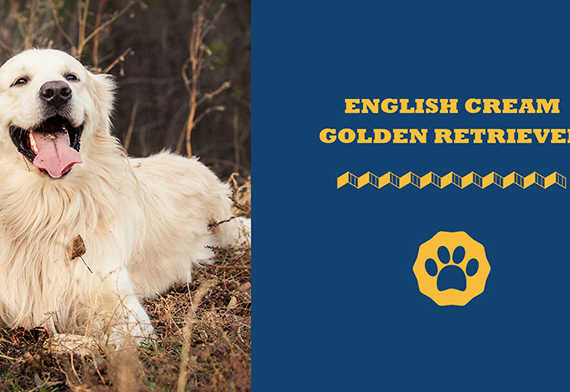
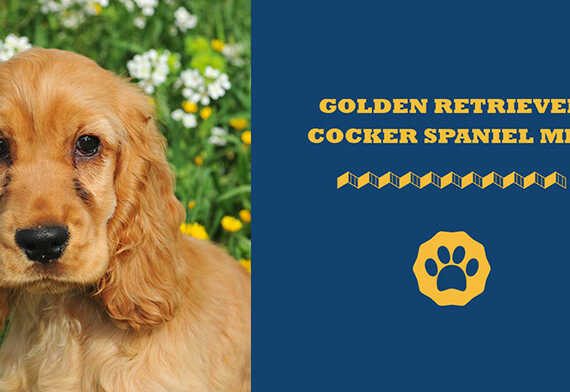
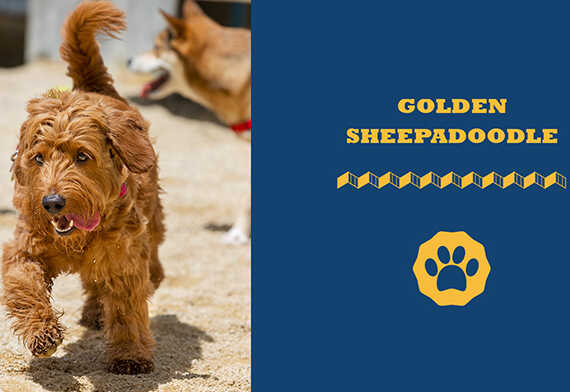
1 Comment
Mary Ann Greenawalt
Our 15 mo old GR has started humping our fixed 6 yr old female GSD to no avail.
Our female has started hiding from our male and her ears are always laid back way more than usual.
Is this the time to get him neutered? Or, are there other options for us to research?
Thank you.